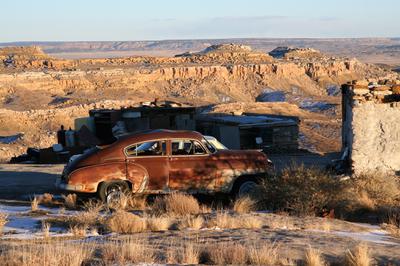The Hopi Indian Reservation Leonard Witzel via Flickr
By removing tribes from their ancestral lands and relegating them to smaller plots of marginal land, European settlers in the United States left Native Americans more vulnerable to climate change, new research shows.
The first-of-its-kind study found that Indigenous nations have lost 98.9 percent of their original land, with tribes forcibly relocated around 150 miles away, on average, from their historical territories. Native Americans have been confined to lands that see more extreme heat, greater wildfire risks, and less rainfall. The findings, which took seven years to compile, were published in the journal Science.
“There is a violent legacy that persists today, and it remains critical that we try to understand it at large scales,” said Justin Farrell, a professor at the Yale School of the Environment and lead author of the study. “This [is] not only for historical clarity around land dispossession and forced migration, but for concrete policies moving forward: How can we use this information so that day-to-day, lived experiences of Indigenous peoples are improved — so that the existing inequities are righted and future risks mitigated?”
The 220 tribes now located on federally recognized land see one-quarter less precipitation today than on their original territories. The Hopi tribe in northern Arizona sees 55 more days of heat above 100 degrees F than it it did on its historical land. Such extreme heat, mirrored across other tribal lands in the Southwest, can spur tribal members to leave reservations and head to cities, where there is greater access to air conditioning and transportation, The New York Times reported.
“The research confirms what Indigenous leaders have been calling out for years,” said Kyle Whyte, a professor of environment and sustainability at the University of Michigan and co-author of the paper. “The U.S. still has not addressed the land dispossession and the suppression of Indigenous territorial governance that are at the root of why Indigenous peoples face disproportionate vulnerability to climate change impacts.”



